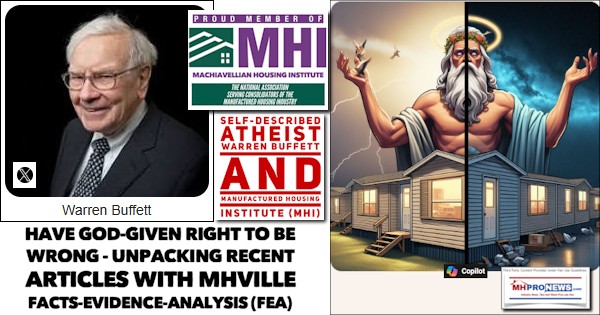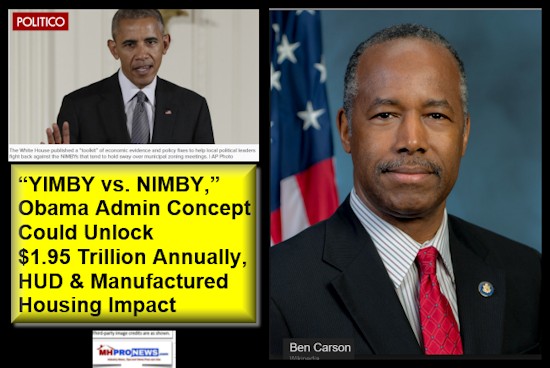
There are important reasons to reach across political, economic, and social divides to gain a fuller perspective of an issue.
In the case of housing, the Obama Administration was closing out his time in the Oval Office with a useful insight, reported by left-of-center Politico 18 months ago. It’s a timely topic for:
- manufactured home professionals,
- investors,
- home seekers,
- housing policy advocates,
- and public officials.
With HUD’s request for public comments about manufactured housing rules/regulations due before midnight Monday, 2.26.2018, this Daily Business News flashback spotlights the wisdom of considering all sides of an issue, analyzing them, and then proposing the necessary action-steps needed to effect positive change.
If the data cited below from UC Berkeley and University of Chicago researchers is correct, the economic benefit to the nation could be as high as $1.95 Trillion dollars annually.
That’s a staggering amount, nearly equal to the national debt over the course of a decade.
On 9.26.2016, Politico published the following.
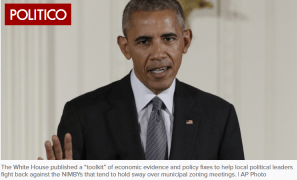
“The Obama administration Monday is calling on cities and counties to rethink their zoning laws, saying that antiquated rules on construction, housing and land use are contributing to high rents and income inequality, and dragging down the U.S. economy as a whole,” wrote Woellert.
“City zoning battles usually are fought block by block, and the president’s involvement will create friction, particularly among environmental groups and the not-in-my-backyard crowd. But the White House jawboning is welcome news to many others, including mayors and builders increasingly foiled by community opposition to development,” per Politico.
The Obama White House “toolkit” said in part, “In more and more regions across the country, local and neighborhood leaders have said yes in our backyard,” adding, “We need to break down the rules that stand in the way of building new housing.”

“When unnecessary barriers restrict the supply of housing and costs increase, then workers, particularly lower-income workers who would benefit the most, are less able to move to high-productivity cities,” said Jason Furman, chairman of the Council of Economic Advisers. “All told, this means slower economic growth.”
How much slower growth?
Woelert stated, “…the country is facing a critical housing shortage in its most vibrant job centers. The result is soaring rents, growing income inequality and sputtering economic growth nationwide. By one estimate, barriers to development in major cities have shaved as much as $1.95 trillion a year off U.S. economic growth.”
The linked report referenced by Woelert was to a study done by UC Berkeley and University of Chicago researchers.
“It’s important that the president is talking about it,” said Mark Calabria, director of financial regulation studies at the libertarian leaning Cato Institute. “Local restrictions on housing supply are a crucial economic issue. I would say it’s one of the top 10.”
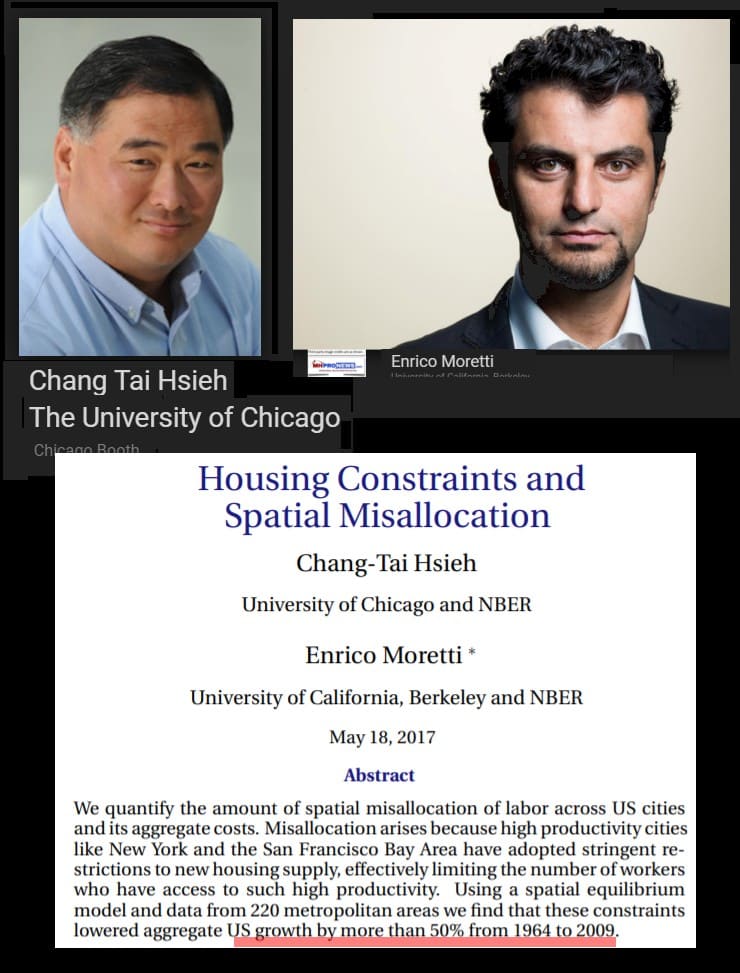
The Key to Unlocking $1.95 Trillion in Economic Opportunities Annually?
One phrase could sum up the solution that HUD Secretary Ben Carson, MD, and the Trump Administration could put to work by the simple and proper enforcement of existing laws.
‘Enforce the enhanced preemption and other parts mandated by the Manufactured Housing Improvement Act of 2000 (MHIA 2000).’
Doing that one powerful thing, which requires no Congressional action, could provide a huge economic stimulus, per the logic of those researchers.
It perhaps could become over-time as important and useful for economic growth as tax reforms, regulatory reform, and the infrastructure plan that the Trump Administration have championed.
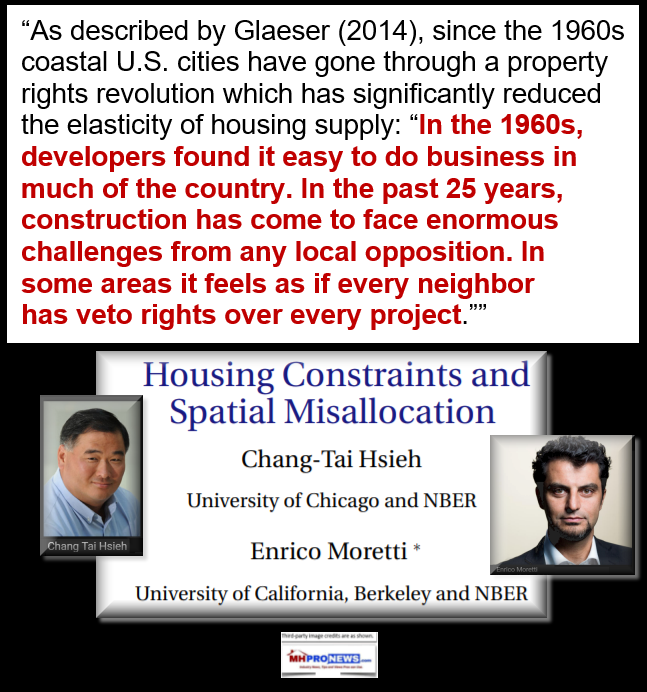
Beat NIMBY with YIMBY and Facts
In San Francisco, there is a new movement afoot, says Quartz, called YIMBY. “Yes, [Develop] in My Back Yard.” It is a play on acronyms, the opposite of NIMBY = “Not In My Back Yard.”
YIMBY is based upon facts, such as what the real estate site Trulia reported in their multi-year look at the impact of affordable housing on other conventional housing.
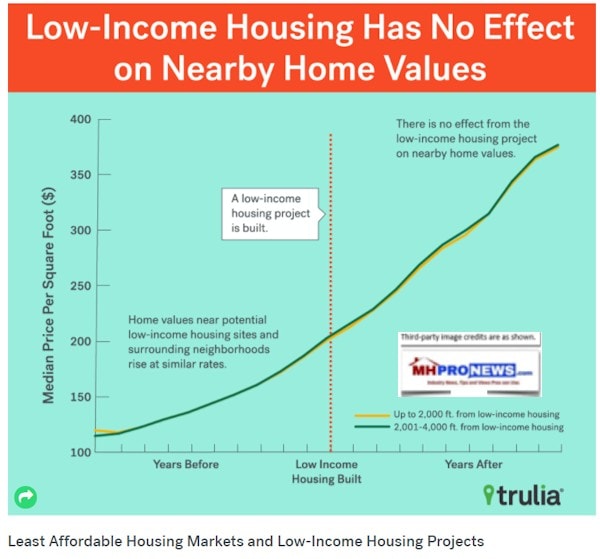
Per Trulia’s study, the impact of affordable housing on other real estate values is negligible. It is so tiny, it’s hardly worthy mentioning, as the graphic above, reflects. The two lines are so close together, on a small graphic, it’s often hard to see the separate trend-lines.
That Trulia research dovetails with a key finding in the HUD PD&R reported on by MHLivingNews in the report linked here. In that HUD funded study, manufactured homes appreciated side-by-side with conventional housing. So, like the more recent Trulia study, affordable housing – in the HUD PD&R case, manufactured housing – didn’t have a negative impact on conventional home values.
Deadline Looms! Federal Request for Comments on Manufactured Housing Program, and You – manufacturedhomelivingnews.com
There are over 8 million affordable housing units needed in America today. Third-party research reveals that the most affordable kind of quality, safe, durable, and economical homes in America today are manufactured homes. The vast majority of Millennials want to own, but don’t want to sacrifice quality and green features.
Building Wealth, Creating Jobs, Solving Problems
MHProNews spotlighted last year the story of actively retired Rev. Donald Tye, Jr. He and his family own a pre-HUD Code factory-built home, installed in a neighborhood side-by-side with conventional on-site built housing. Their early 1970s model factory-built home is worth about 400 percent more than it was on the day it was installed, per Zillow, said Tye.
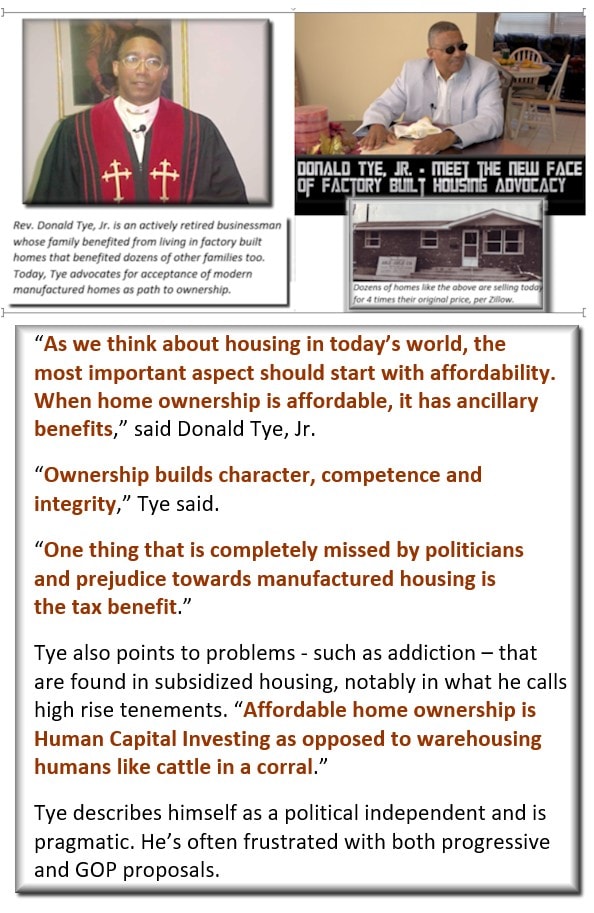
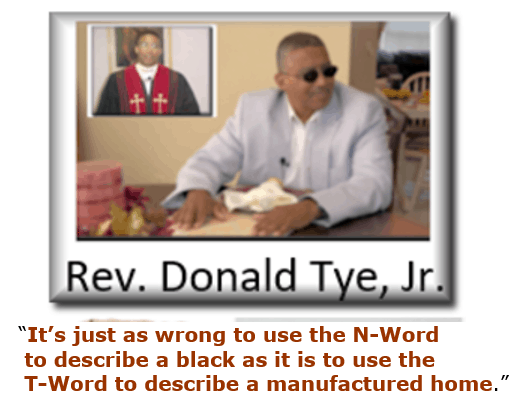
The partisan political divide could be breached by an open-minded look at all the facts. The excuses used by NIMBYites are many, but they often come down to a fear that their home value will be harmed. Look again at the chart from Trulia, whose research indicates otherwise. Creating more affordable housing, which can be rapidly accomplished by HUD Code manufactured homes due to enhanced preemption provided under the MHIA.
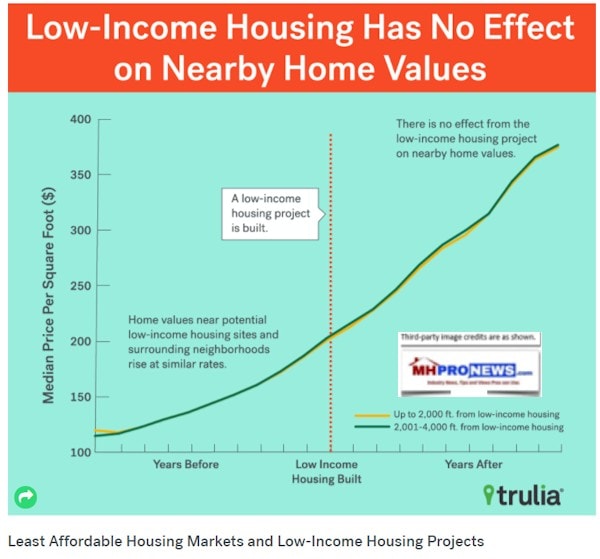
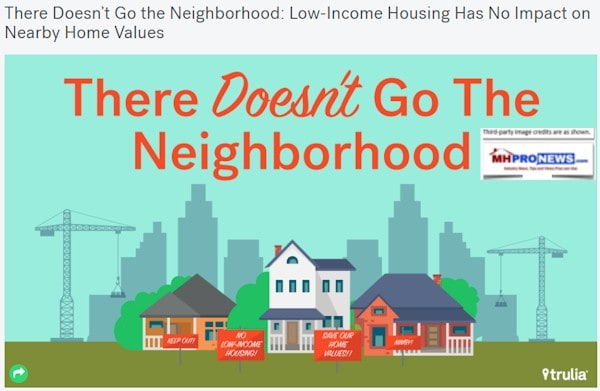
The enforcement of enhanced preemption under the Manufactured Housing Improvement Act (MHIA) of 2000 has been an ongoing theme of MHProNews for many years. It has been touted by the Manufactured Housing Association for Regulatory Reform (MHARR) ever since the law went into effect. A recent example, is linked here.
Will Secretary Carson and officials at HUD discover and embrace the solution that’s hiding in plain sight, and is within their jurisdiction? Industry pros must let HUD know. Why not link this article in your comments or additional comments letter to HUD?
To learn more click the reports linked below. “We Provide, You Decide.” © (News, analysis and commentary.)
Related Report Update 6:25;2018:
https://www.valuepenguin.com/home-insurance/fear-manufactured-homes-affordable-housing-crisis
Notice: You have until midnight Monday Night (2:26;2018)!
Federal Manufactured Housing Program Review Comments Due Next Week, 2.26.2018
Getting More Manufactured Home Financing Options? HUD Comments Provide Unique Door,
Deadline Looms! Federal Request for Comments on Manufactured Housing Program, and You – manufacturedhomelivingnews.com
There are over 8 million affordable housing units needed in America today. Third-party research reveals that the most affordable kind of quality, safe, durable, and economical homes in America today are manufactured homes. The vast majority of Millennials want to own, but don’t want to sacrifice quality and green features.
(Image credits are as shown above, and when provided by third parties, are shared under fair use guidelines.)


























